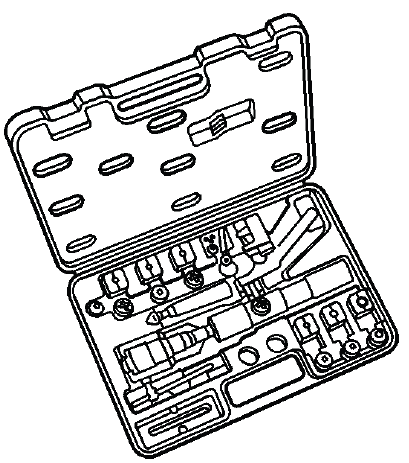Buick Enclave: Description and Operation
BRAKE ASSIST SYSTEM DESCRIPTION AND OPERATION
System Component Description
The brake assist system consists of the following:
Brake Pedal
Receives, multiplies and transfers brake system input force from driver.
Brake Pedal Pushrod
Transfers multiplied input force received from brake pedal to brake booster.
Vacuum Brake Booster
Uses source vacuum to decrease effort required by driver when applying brake system input force.
At rest, source vacuum is applied to both sides of the vacuum diaphragm for single boosters or to both sides of each of the diaphragms for tandem boosters. Return springs maintain the booster in a rest position.
When brake system input force is applied, vacuum to the rear of the diaphragm(s) is cut off and air at atmospheric pressure is admitted in its place. This provides a decrease in brake pedal effort required.
When input force is removed, vacuum again replaces atmospheric pressure within the booster.
Vacuum Source
Supplies force used by vacuum brake booster to decrease brake pedal effort.
The primary source for vacuum is typically the vehicle's internal combustion engine. Some vehicles may use a vacuum pump to ensure and adequate supply of vacuum under various operating conditions, such as during cold start-up, heavy throttle and high altitude.
Vacuum Pump Relay
Vehicles equipped with a vacuum pump will typically be equipped with a relay used to provide voltage to the vacuum pump motor, when commanded by the powertrain controller.
Vacuum Monitoring System
Provides a feedback voltage signal relative to the amount of vacuum available for the vacuum power brake booster.
This typically consists of a vacuum sensor mounted either into the power vacuum brake booster, integrated with the vacuum check valve or in-line within the vacuum hose. The sensor feedback is typically monitored by the powertrain control module(s).
Vacuum Source Control
If equipped with a system to monitor available levels of vacuum for the brake assist system, the powertrain control module(s) typically perform the primary monitoring function.
The powertrain controller will typically monitor the feedback signal of a vacuum sensor, as it relates to available vacuum at the vacuum power brake booster. The powertrain controller uses the information to make sure available vacuum remains above predetermined levels. If additional vacuum is required, the powertrain controller may reactivate engine cylinders, if equipped or command a vacuum pump ON, if equipped, and/or may alter the operation of various other engine controls and devices, as necessary.
Vacuum Source Delivery System
Enables delivery and retention of source vacuum for vacuum brake booster.
This typically consists of a vacuum check valve and a vacuum hose or pipe. If a vacuum pump is used, additional check valves may be used.
System Operation
Brake system input force from the driver is multiplied by the brake pedal and transferred by the pedal pushrod to the hydraulic brake master cylinder. Effort required to apply the brake system is reduced by the operation of the vacuum brake booster.
When brake system force is applied, vacuum to the rear of the diaphragm(s) is cut off and air at atmospheric pressure is admitted in its place. The vacuum acts to pull the diaphragm(s) forward, while the atmospheric pressure acts to push from behind. As a result, the amount of effort required by the driver is reduced. When input force is removed, vacuum again replaces atmospheric pressure within the vacuum power brake booster to help return the booster to rest. Return springs maintain the system in a rest position.
If the vehicle is equipped with a vacuum monitoring system, the powertrain control module(s) typically will alter powertrain functions and/or command the vacuum pump ON, if equipped, to provide for the vacuum needs of the brake assist system, as operating conditions warrant.
BRAKE WARNING SYSTEM DESCRIPTION AND OPERATION
Brake Warning Indicator
Hydraulic Brakes Block Diagram
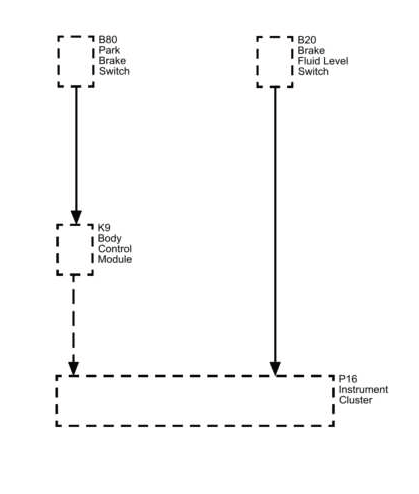
Fig. 67: Hydraulic Brakes Block Diagram


The instrument panel cluster (IPC) illuminates the Red Brake Warning indicator when one or more of the following occurs.
- The body control module (BCM) detects that the park brake is engaged.
- The IPC detects a low brake fluid condition. The IPC receives a low brake fluid signal from the low brake fluid switch in the master cylinder reservoir requesting illumination.
- The electronic brake control module (EBCM) detects an ABS malfunction which disables dynamic rear proportioning (DRP). The IPC receives a GMLAN message from the EBCM requesting illumination.
- The IPC performs the bulb check at the start of each ignition cycle. The Red Brake Warning indicator illuminates for approximately 3 seconds before turning OFF.
- The IPC detects a loss of GMLAN communications with the EBCM.
HYDRAULIC BRAKE SYSTEM DESCRIPTION AND OPERATION
System Component Description
The hydraulic brake system consists of the following:
Hydraulic Brake Master Cylinder Fluid Reservoir
Contains supply of brake fluid for the hydraulic brake system.
Hydraulic Brake Master Cylinder
Converts mechanical input force into hydraulic output pressure.
Hydraulic output pressure is distributed from the master cylinder through 2 hydraulic circuits, supplying diagonally opposed wheel apply circuits.
Hydraulic Brake Pressure Balance Control System
Regulates brake fluid pressure delivered to hydraulic brake wheel circuits, in order to control the distribution of braking force.
Pressure balance control is achieved through dynamic rear proportioning (DRP), which is a function of the ABS modulator. Refer to ABS Description and Operation for specific information on the operation of DRP.
Hydraulic Brake Pipes and Flexible Brake Hoses
Carries brake fluid to and from hydraulic brake system components.
Hydraulic Brake Wheel Apply Components
Converts hydraulic input pressure into mechanical output force.
System Operation
Mechanical force is converted into hydraulic pressure by the master cylinder, regulated to meet braking system demands by the pressure balance control system and delivered to the hydraulic brake wheel circuits by the pipes and flexible hoses. The wheel apply components then convert the hydraulic pressure back into mechanical force which presses linings against rotating brake system components.
SPECIAL TOOLS AND EQUIPMENT
SPECIAL TOOLS
J 28662
Brake Pedal
Effort
Gauge
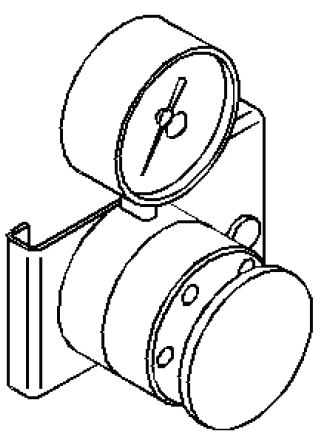
J 29532
Diaphragm
Pressure
Bleeder
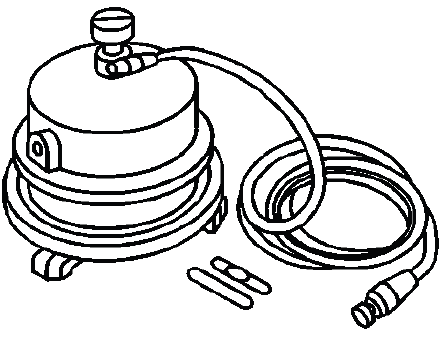
J 44894-A
Brake
Pressure
Bleeder
Adapter
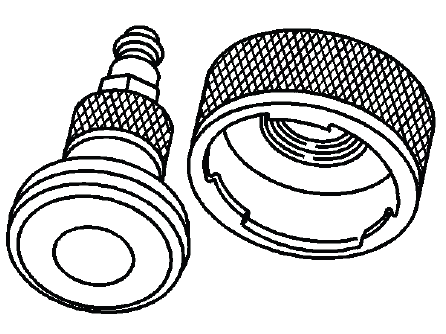
J 45405
Brake Pipe
Flaring Kit
